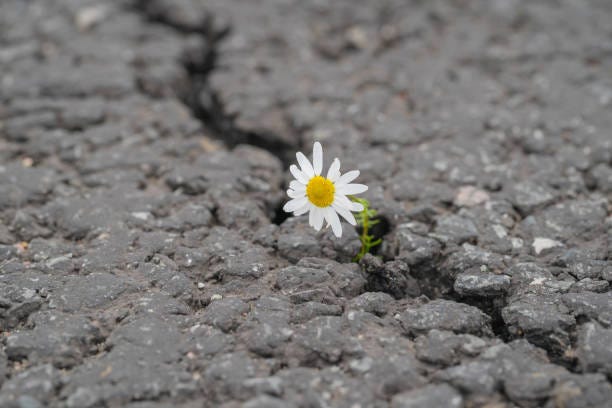April. Erratic, unpredictable, at once melancholy and radiant, the month in which spring might just be well and truly upon us, or hiding in the corner, a mischievous child playing hide and seek.
So perhaps I shouldn’t have been surprised to wake up on April 21 to a snow-covered garden; way too late in the season for the fully blooming forsythia outside my window to be wearing a winter-white blanket. I hadn’t gotten around to repotting my pansies and new bay laurel plant, and the shivering brave peony shoots practically did an about-face back into the soil.
The natural order of things
As my husband said, it was just Mother Nature, once again exercising her authority and reaffirming who the real boss is. Reminding us that spring will come well and truly in its own good time.
But She was also reminding us of something else, I think. That the incredibly complex ecosystem around us has been bred to be adaptable. And Mother Nature is also generous with her lessons, if only we pay a little bit of attention.
The most important process in nature for living in a complex world is adaptability. Adaptability is what has allowed all organisms, from the beginning of biological time some 3.5 billion years ago, not only to survive but also to thrive.
Rafe Sagarin, PhD, Institute of the Environment, University of Arizona
We’re constantly surrounded by signs of natural adaptability. And perhaps we’ve been paying a bit more attention too. Have you noticed that the sky seems bluer and clearer, that the unfolding of the season has been more gentle, that the birds are plentiful? Nature took no time to fill the vacuum that our lessened human activity left, and fill it with beauty.
Ecologist Tom Fleischner of Prescott College defined natural history as “a practice of intentional, focused attentiveness and receptivity to the more-than-human world, guided by honesty and accuracy.”
We have great evidence of our human curiosity with the natural world, most notably in the wonderful museums that have attempted to catalogue and preserve earth’s awesome complexity. But as we moved away from nature towards technology to understand the world, something has been lost.
What does this have to do with me?
Observation done in a vacuum of real life experience is at best an approximation. To be sure, the sophistication and pure genius of technology means that we can go much further, much faster. We have only to look at the amazing achievements of the vaccine development of the past year as evidence. But as John G.T. Anderson says in this excellent article in American Scientist: “Technology can aggregate broad data sets, but it also has the ability to remove us from actual landscapes and organisms.”
If this all seems a bit esoteric and far removed from you and me in the here and now, consider this. In removing ourselves further from nature, we’re losing our own innate ability to observe small miraculous changes and evolutions - the natural order of things that can fire our imaginations and create a new kind of adaptive thinking. And, in the process, bring us in closer harmony with a world in transition.
These realizations are pointing human beings back to old ways of discovering the world – when the pastime of natural history was an extremely popular way for men and women of all walks of life to understand nature and its changes. And, they remind people of the wisdom of earlier biologists like Charles Darwin…who saw no fundamental difference between the lives of animals and those of humans.
The beauty of adapting
On April 23, two days after that unexpected snowfall, my forsythia bush was back to its full spring glory. Having gone through countless seasons of the unpredictability of spring, it has learned to adapt to unplanned shifts and changes, understanding that it was meant to blossom and flower, no matter what the weather.
A most wonderful expression of this adaptability is the beautiful documentary My Octopus Teacher. About the unusual relationship forged between a filmmaker and an octopus, the film has much to say about the beauty, fragility, strength, and ultimate survival of both human and mollusc.
So, too, can we learn to adapt and thrive. We only need look out the window to the miracle of nature to be reassured that, no matter what life throws at us, we too will blossom and grow.
Clean-out-the-fridge Frittata
serves 4
If there is a recipe that is infinitely suited to adaptability, it’s the humble frittata. With a base of ingredients of eggs and milk or cream, the rest of the creation is only limited by your imagination and what’s in the refrigerator. Go ahead and adapt this recipe with what you have on hand. It will be both delicious and cathartic, as you use up the last of that wilted basil and leftover ricotta cheese.
Note: any type of cheese works well in this frittata, so long as it is grated for easier melting.
Ingredients
8 eggs
3/4 cup (6 ounces) milk, cream or a blend of both
1 tablespoon unsalted butter
Salt and pepper to taste
1 cup (125 grams) ricotta cheese
1/2 cup (50 grams) grated Parmigiana or other hard cheese (pecorino, manchego)
1 cup roasted red peppers, chopped
1/2 cup chopped fresh herbs of your choice (basil, parsley and mint are particularly nice: use one or a combination)
Adjust oven rack to the middle position and heat the oven to the broil setting.
In a medium bowl, blend the eggs, milk, salt and pepper together with a whisk until blended.
In a large heavy non-stick skillet with an ovenproof handle, melt the butter over medium heat. Add the egg mixture cook until beginning to set, 2 to 3 minutes. Sprinkle the cheeses, herbs and peppers over the eggs and cook for another 5 minutes, or until the frittata is beginning to set around the edges.
Place the pan in the oven and cook for 10-15 minutes, or until the frittata is set and no longer loose. Keep an eye on the frittata and if the top is browning too quickly, cover it with foil until it is set.







